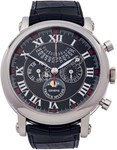The cache from Colonel Vassal Charles Steer-Webster (1897-1970) will be sold by his only relative at Mitchells in Cockermouth on March 18-20.
It was as deputy director of experimental engineering that Col Steer-Webster played a key role in the success of the Normandy landings of June 6, 1944. His designs included the ‘chocolate mattress’ that allowed heavy artillery to be brought ashore and the Mulberry Harbours, the floating artificial harbours built on the Thames and Clyde that were used to receive and protect supply ships anchored off the French coast.

Models of the ‘chocolate mattresses’, designed by Colonel Vassal Charles Steer-Webster, used during the D-Day landings. They are part of the archive offered at Mitchells.
Mulberry A, towed into position off Omaha Beach by a fleet of tugboats, was operational for just a few important June days before it was destroyed by a storm. Mulberry B, at Gold Beach at Arromanches, was in situ for some 10 months and used to land over 2.5m troops and 500,000 vehicles. Colonel Steer-Webster was later awarded the OBE, the Légion d’honneur and the US Legion of Merit for his work.
All are included in the archive that is being sold as a single lot by Steer-Webster’s nephew, 87, who lives in Keswick. Mitchells has estimated the lot at £10,000-15,000.
Alongside approximately 150 black and white photographs of the Mulberry Harbour in construction and use are presentation models of three of its pre-fabricated sections: the Phoenix anchorage point, the Whale floating roadway and the Concrete Mat shaped, as the nickname suggests, like a bar of chocolate.















